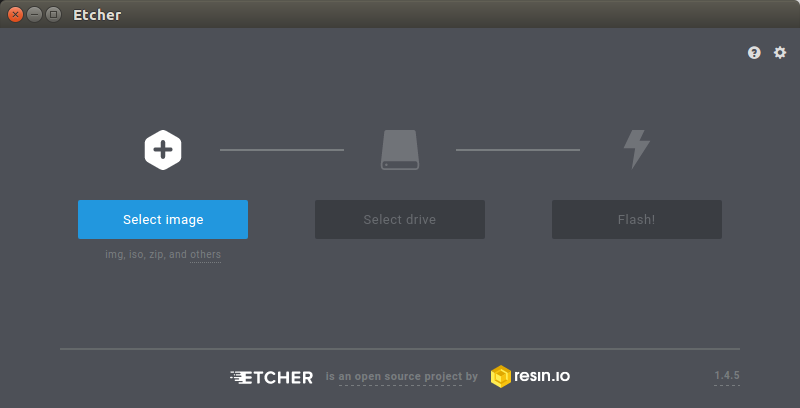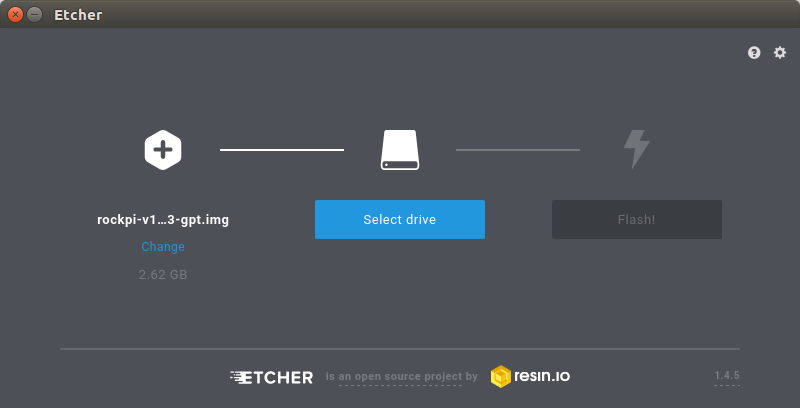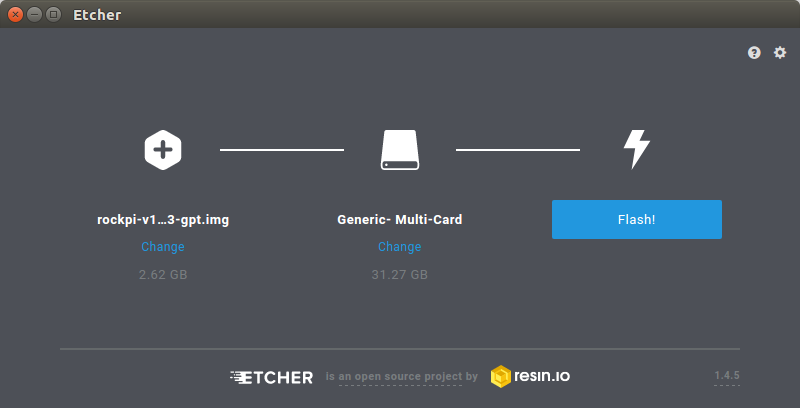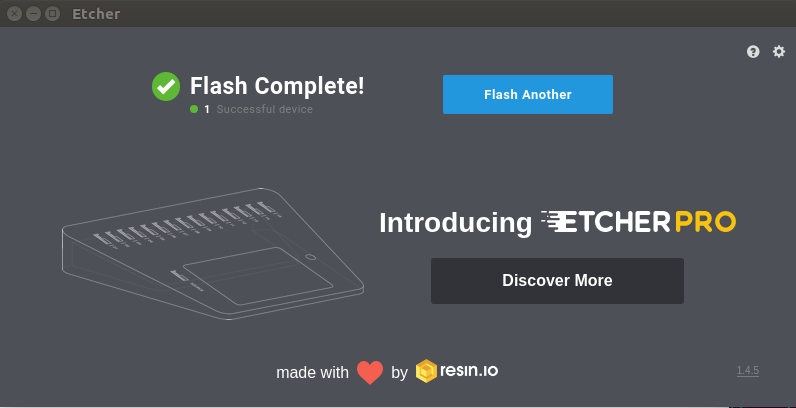Rockpi4/install/es es
Instalación
Escoge e instala un Sistema Operativo en tu ROCK Pi 4. Para seguir correctamente esta guía de instalación necesitarás:
- Elegir un método de instalación
- Descargas los archivos necesarios
- Tener un ordenador con el que grabar el Sistema Operativo
- Seguir las instrucciones sobre la grabación flash
Métodos de Instalación
En la mayoría de los casos, tendremos dos opciones a la hora de instalar un nuevo Sistema Operativo en nuestro ROCK Pi 4:
- Método de actualización de la memoria eMMC mediante USB
- El Sistema Operativo se pasará en forma de imagen mediante cable USB a la memoria eMMC del ROCK Pi 4
- Método de la tarjeta uSD
- El Sistema Operativo en forma de imagen se escribirá en una tarjeta uSD que posteriormente se insertará en el ROCK Pi 4.
Cada método tiene sus beneficios y necesita de diferentes niveles de experiencia.
Método de actualización de la memoria eMMC mediante USB
Rockusb es un protocolo USB personalizado de Rockchip y soportado por ROCK Pi 4 que se usa para grabar la imagen del Sistema Operativo a instalar que tenemos en el ordenador en la memoria eMMC del ROCK Pi (USB a eMMC). Este método lo suelen usar usuarios avanzados que estan mas familiarizados con las herramientas de línea de comandos o la modificación/personalización de código fuente y necesitan descargar estas actualizaciones a la placa para comprobar su ejecución.
Este método necesita el siguiente hardware:
- Una placa ROCK Pi 4 con alimentación
- Un ordenador (Linux/Mac)
- Un cable tipo USB A a Tipo A
- Un cable USB serie a TTL (no es necesario para realizar la grabación)
- Un teclado y un ratón USB (no es necesario para realizar la grabación)
- Un monitor HDMI con conector HDMI grande (no es necesario para realizar la grabación)
- Un cable Ethernet (no es necesario para realizar la grabación)
Ve a Descargas para conseguir un Sistema Operativo
Si tu ordenador utiliza...
- Linux
Step 1: Make sure rkdeveloptool is set up on host computer
To build rkdeveloptool on a debain based Linux distribution, follow the instruction below:
Install build dependecy:
sudo apt-get install libudev-dev libusb-1.0-0-dev dh-autoreconf
Clone the source code and build:
git clone https://github.com/rockchip-linux/rkdeveloptool cd rkdeveloptool autoreconf -i ./configure make
Now you have rkdeveloptool executable at the current directory.
sudo cp rkdeveloptool /usr/local/bin/
Step 2: Downloads all necessary images
For ROCK Pi 4, there are two version of system images, Android and Debian. The system image names have the specified words, like android and debian. And all the system images names are marked with xxx_gpt.img.
Step 3: Boot device into maskrom mode
1. Insert eMMC Module into eMMC to uSD card converter board. Insert the converter board into uSD Card Reader, which connects to host Linux OS.
2. Use the command to erase the eMMC device
$ sudo dd if=/dev/zero of=/dev/sdx bs=1M count=100
3. Insert the eMMC onto the socket on board.
4. Power on ROCK Pi 4.
5. Plug the ROCK Pi 4 to Linux Desktop with USB type A to type A cable. On the host PC, command, lsusb, should show the following VID/PID if the board is in maskrom mode: Bus 003 Device 061: ID 2207:0011
Step 4: Flash images onto ROCK Pi 4 eMMC and reboot
When you choose the format of xxx-gpt.img, you should follow the steps:
$ rkdeveloptool db rk3399_loader_xxx.bin $ rkdeveloptool wl 0 xxx_gpt..img $ rkdeveloptool rd
Now you reboot the new image on eMMC.
- Mac
Running on SD Card Method
Running on SD card method allows you to place a microSD card into a ROCK Pi 4 to automatically boot and run.
This method required the following hardware
- ROCK Pi 4 board with power supply
- Host machine (Linux/Mac/Windows)
- MicroSD card with 8GB or larger of storage
- USB Mouse and/or keyboard
- HDMI Monitor with full size HDMI cable
- Ethernet cable
Go to the Downloads to get your system
Choose host machine
The host machine type includes Linux, Mac, Windows. But this solution doesn't support flashing images in xxx-rkupdate.img format.
Step 1: Make sure etcher is set up on host computer
Download the flash tool, etcher, from Downloads. Choose the right version for your host operation system. Here we operate on host Ubuntu 16.04.
After download the package, unpack it.
Step 2: Downloads all necessary images
For ROCK Pi 4, there are two version of system images, Android and Debian. The system image names have the specified words, like android and debian. And all the system images names are marked with xxx_gpt.img.
Step 3: Flash the image into uSD Card
1. Insert the uSD Card into uSD Card Reader, which connects to host computer.
2. Run the application, for example, by executing the command on Ubuntu 16.04:
$ /bin/bash etcher-etcher-electron-1.4.5-x86_64.AppImage
3. In the etcher window, we click button Select image.
4. In the etcher window, we click button Select Drive.
5. In the etcher window, we click button Flash.
6. In the etcher window, it shows us Flash Complete!
7. Insert uSD Card into the socket on board.
8. Connect the ROCK Pi 4 to your display with the HDMI cable. Ensure that the source for the display is switched to the HDMI port you are using.
9. Connect the USB keyboard and mouse.
10. Connect the power supply to the ROCK Pi 4. The board will begin to immediately.




